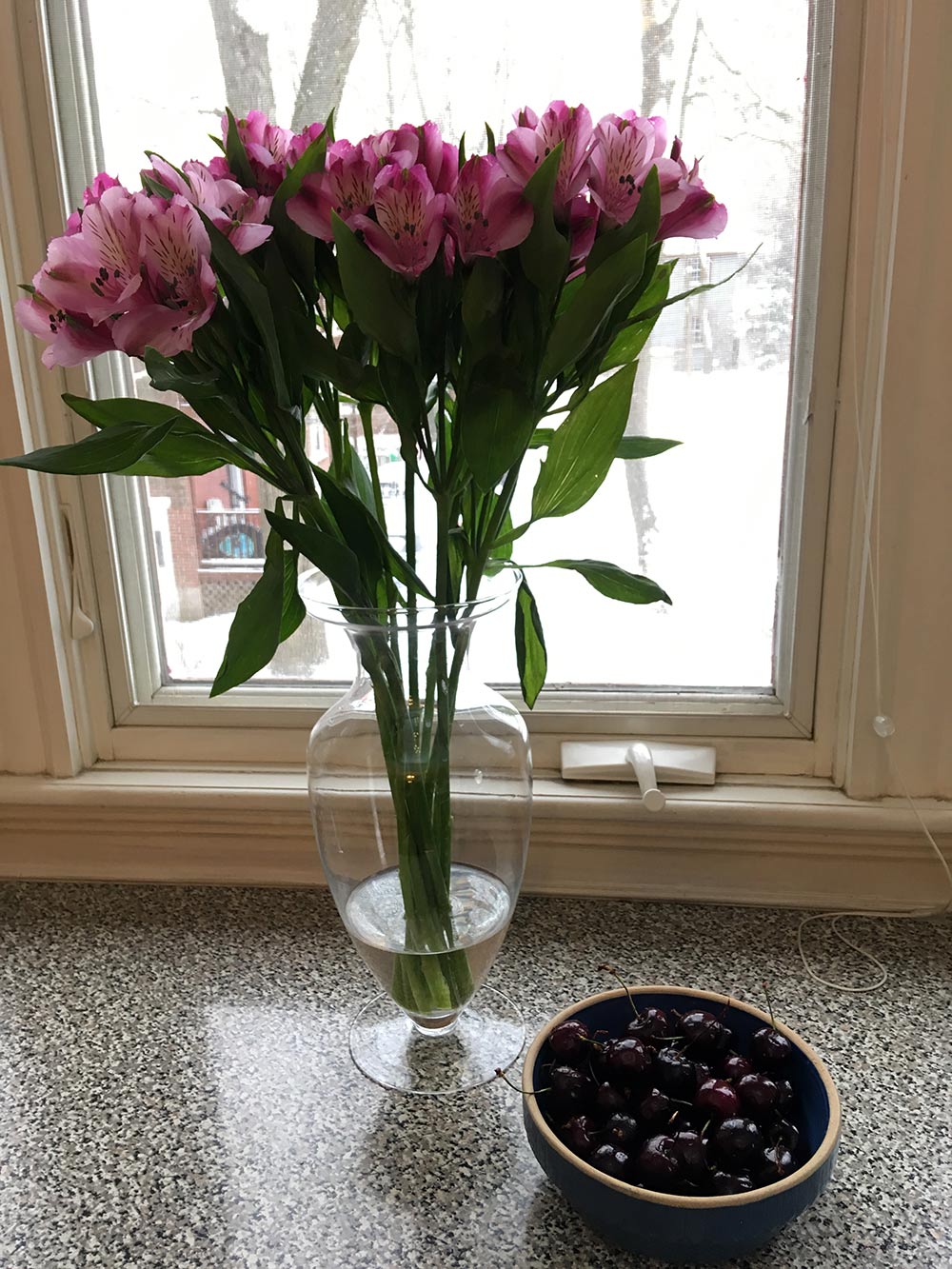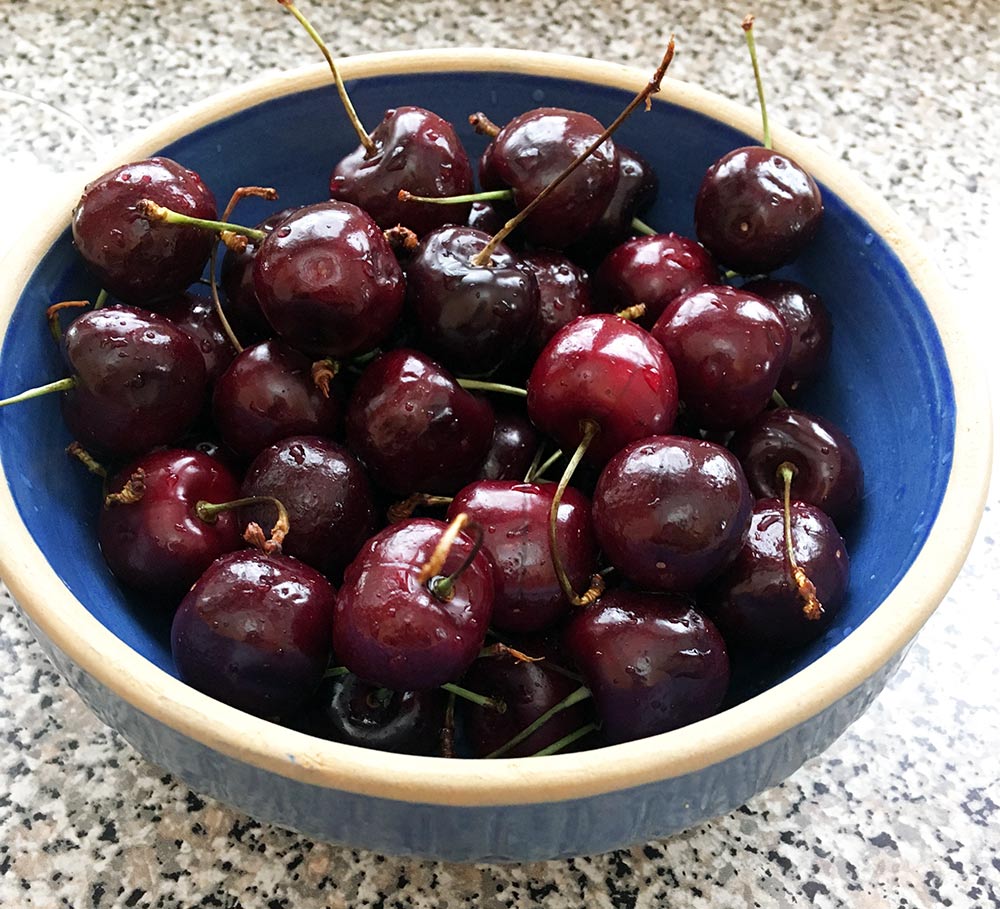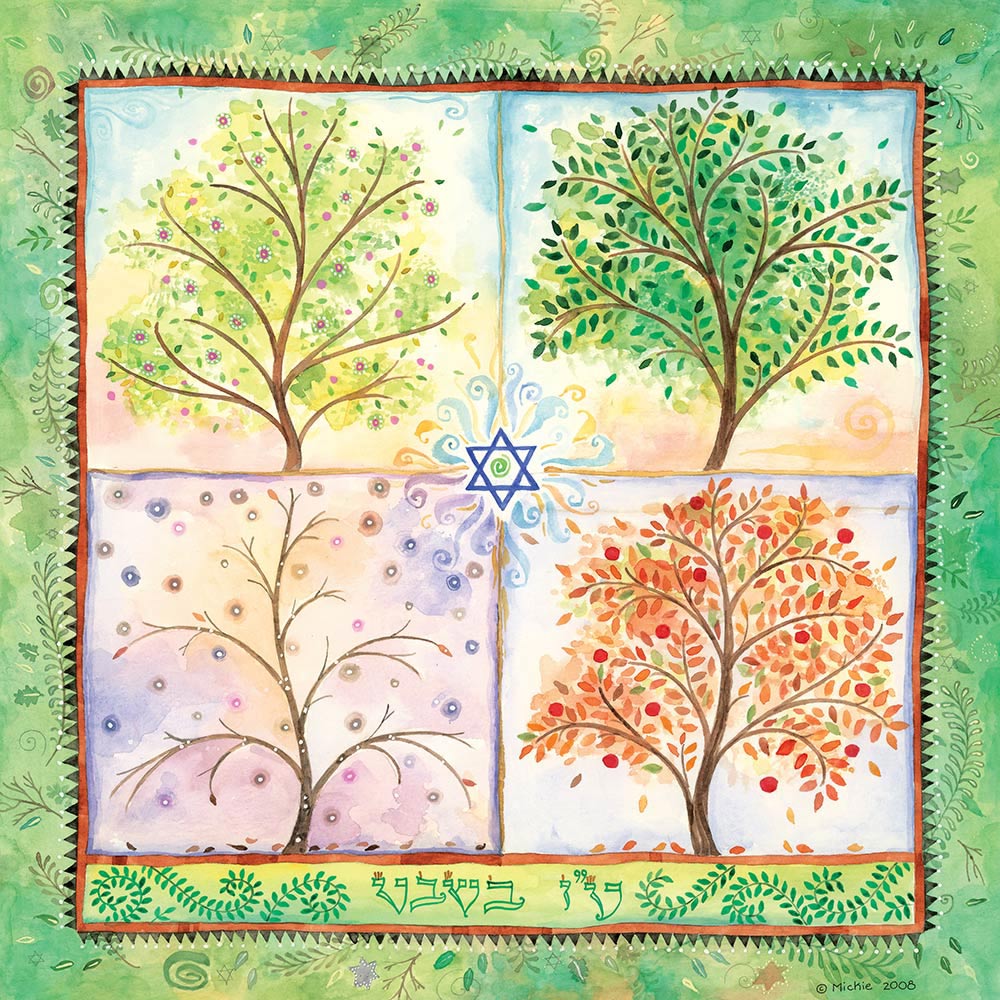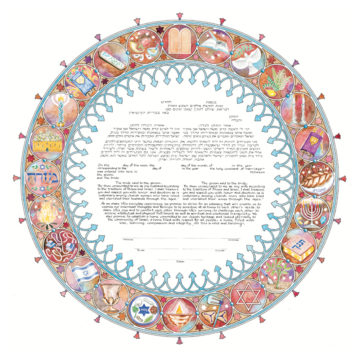Happy Tu B’Shevat!

It’s still snowing here in Massachusetts so it’s hard to celebrate the Jewish New Year for trees by actually planting a tree. So I did the next best thing and bought flowers to brighten up our lives!
One Tu B’Shevat custom that I especially like is to eat a new fruit on this day. I haven’t eaten cherries for months, so they are the official ‘new fruit’ for today. Here is a little information about this holiday.
Tu B’Shevat, the 15th day of the Jewish month of Shevat, is a holiday also known as Rosh HaShanah La’Ilanot, literally the New Year of the Trees. It is the Israeli Arbor Day!
The word “Tu” is not really a word; it is the number 15 in Hebrew numerology (the letter tet = 9 + the letter vav = 6 together adding up to 15). So ‘Tu B’Shevat’ means the 15th of Shevat. In contemporary Israel and everywhere else, Tu B’Shevat really lends itself to good thoughts and deeds. It is celebrated as a day of environmental stewardship and ecological awareness. Thousands of trees are planted in celebration. On Israeli kibbutzim, Tu B’Shevat has always been celebrated as an agricultural holiday.
Tu B’Shevat is the new year for the purpose of calculating the age of fruit trees for the purpose of tithing. See Lev. 19:23-25, which says that fruit from trees may not be eaten during the first three years; the fourth year’s fruit is for G-d, and after that, you can eat the fruit. So the talmudic requirements for fruit trees (because we have rules for everything!) used Tu B’Shevat as the cut-off date for calculating the age of a fruit-bearing tree. Fruit that ripened on a three-year-old tree BEFORE Tu B’Shevat is forbidden to eat. Fruit ripening AFTER Tu B’Shevat on a three year old tree is permitted. In the Middle Ages, Tu B’Shevat was celebrated as a feast of fruits. In the 16th century, the noted kabbalist Rabbi Yitzchak Luria of Safed and his disciples instituted a Tu B’Shevat seder, in which the fruits and trees of the Land of Israel were given symbolic meaning. Today, many people celebrate the Tu B’Shevat seder by eating ten specific fruits and drinking four cups of wine in a specific order while reciting the appropriate blessings. According to Rabbi Luria, this would bring human beings, and the world, closer to spiritual perfection.
In the Middle Ages, Tu B’Shevat was celebrated as a feast of fruits. In the 16th century, the noted kabbalist Rabbi Yitzchak Luria of Safed and his disciples instituted a Tu B’Shevat seder, in which the fruits and trees of the Land of Israel were given symbolic meaning. Today, many people celebrate the Tu B’Shevat seder by eating ten specific fruits and drinking four cups of wine in a specific order while reciting the appropriate blessings. According to Rabbi Luria, this would bring human beings, and the world, closer to spiritual perfection.
I always loved Tu B’Shevat when I lived in Israel because it was usually warm enough to be messing around in the dirt (I love to garden), planting things and anticipating watching the new little plants grow.
#mickiecaspi #caspicardsandart #tubshevat #newyearfortrees #newfruit #planttrees #fourseasons #artist #art #artistsoninstagram #judaica #judaicaartist #jewishart #jewishpride #unique #paint #painter #originalpainting #watercolor


